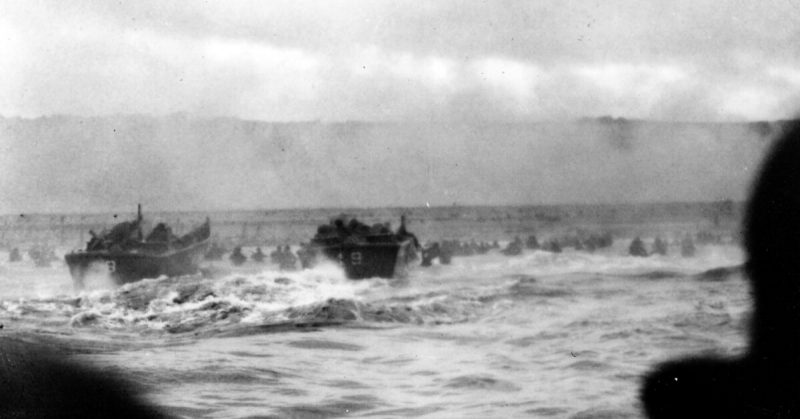The experiences of Allied troops landing on D-Day were very different. The paratroopers scattered by poor weather across hundreds of miles of countryside faced different challenges from those streaming off the boats onto the landing beaches. Even on those beaches, no two experiences were the same, differences in circumstances made each soldier’s experience a different battle.
1. Utah Beach
The American landings at Utah Beach were among the easiest, as the Germans had not prepared heavy defenses. Because of flooded land in the area, the Germans had not expected the Allies to land there, and so it was lightly defended. With three quarters of the trains and strategic bridges in northern France taken out by air raids and the French Resistance, there was little way for the Germans to respond to the landings
A massive bombardment by battleships, cruisers and destroyers shattered what defenses the Germans had. 32 amphibious tanks sailed two miles to the beach under cover of the bombardment, with only four of them lost on the way. With armor in place, the infantry followed, and found only light resistance.
Despite the 4th Infantry Division landing on the wrong beach, Utah was quickly taken. Safe routes through the minefields and obstacles were established within three hours, and the tanks moved on to take the causeways that would let them progress safely across the flooded areas.
2. Omaha Beach
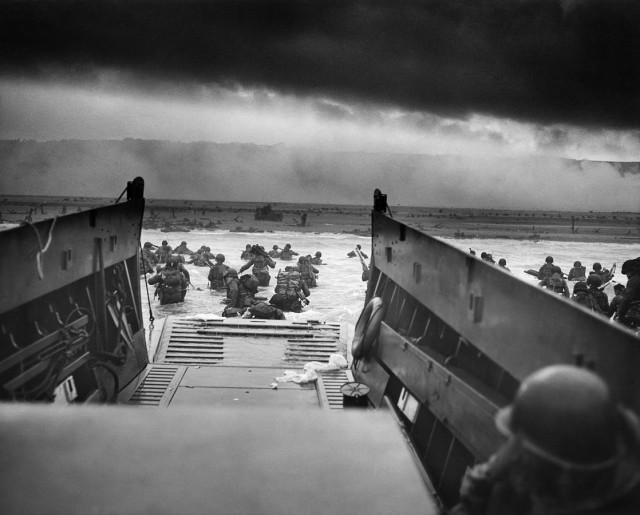
By contrast, the other American landings, at Omaha Beach, were the toughest of the day. 300 yards of sand led to steep shingle and then a 150-foot plateau, with 100-foot cliffs blocking the ends of the beach. The veteran German 352nd Infantry Division were in strong defenses on the top of the plateau, and there were only four ways up it, all through narrow ravines. The only reason this difficult beach featured in the landings was to connect the rest into a single beachhead.
Poor visibility and choppy waters made the initial bombardment ineffective and sank all but four of the amphibious tanks that were the first wave. When the infantry hit shore, they disembarked into a deadly hail of fire. The obstacles the engineers were meant to clear instead became shelter for desperate men, as the sea and the beach ran red with blood.
To the east of the beach, troops made it ashore, some in the wrong place by accident, others finding cover in the smoke from fires lit by the artillery bombardment. Reaching the plateau, they prevented a German counter-attack on the beach, but the Germans were still well dug in.
Desperate measures were needed. Destroyers sailed so close that the Germans could shoot them with rifles. The ships bombarded the German positions, risking hitting the American troops in the process. At last the Germans surrendered, but the minefields and obstacles remained to be cleared. By the end of the day, the Americans had advanced only 1,200 yards at Omaha Beach, and the Germans were gathering beyond it for a counter-attack.
3. Gold Beach
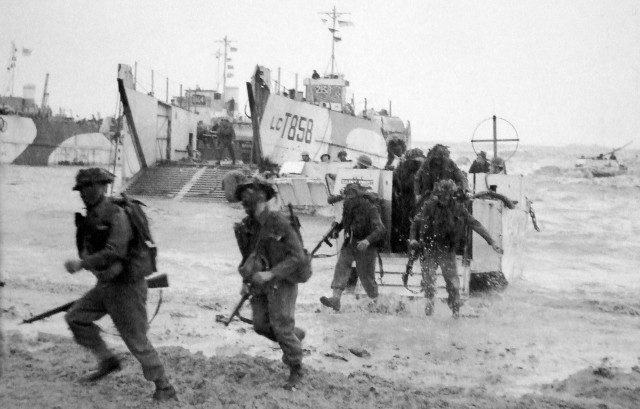
The preparatory bombardment at Gold Beach, one of the British landing sites, made a huge difference. Three out of four heavy German guns at the Longues-sur-mer battery were taken out by direct hits from cruisers an hour before the troops hit the beach at 0725. The fourth gun managed to return to action in the afternoon, and another defensive position provided enfilading fire against the Allies for most of the day, but most of the defenses had been taken out.
The Germans held out in heavily fortified houses along the shore, which British infantry stormed before advancing inland. No. 47 Commando seized Port-en-Bessin the following day, providing access to a small port, and the Hampshire Regiment captured Arromanches, which would become the site of the vital Mulberry Harbour.
The only Victoria Cross awarded for action on D-Day went to Sergeant Major Stanley Hollis for action on Gold Beach. He single-handedly seized two pillboxes, capturing dozens of German troops, and rescued two of his men following an unsuccessful attack on an enemy position.
2. Juno Beach
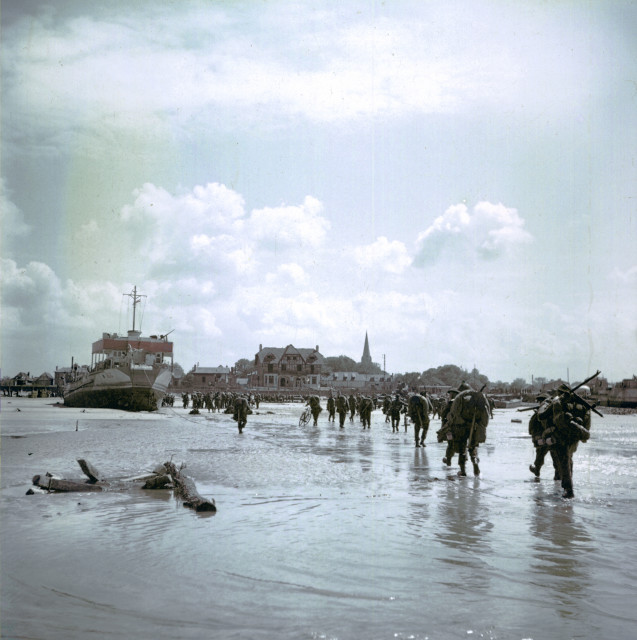
The task of taking Juno Beach, in the centre of the British sector, fell to Canadian infantry and British Royal Marine commandos under the command of British 1st Corps.
Juno proved a tough landing. A reef off the coast held up the landing craft for half an hour, while they floated in sight of the German defenders. Amphibious and obstacle-clearing tanks, which should have gone in first to clear the way for the infantry, had to be held back because of the difficult conditions. As the infantry flowed ashore, they found themselves without armored support.
Once the tanks landed, a similar problem occurred again. Clearing the beach exits would take specialized armor that they didn’t have. Men and vehicles became backed up, sitting exposed on the beach.
The key breakthrough came at the east end of the beach. Heavy casualties were taken on the 100-yard dash to the sea wall there, until a ship came up to bombard the German defences. Almost grounding their vessel in the attempt, the ship’s crew blew a hole in the German lines, and the Canadians streamed through.
Despite this difficult start, the Canadians achieved the furthest advances on the first day, reaching seven miles inland after their breakout.
1. Sword
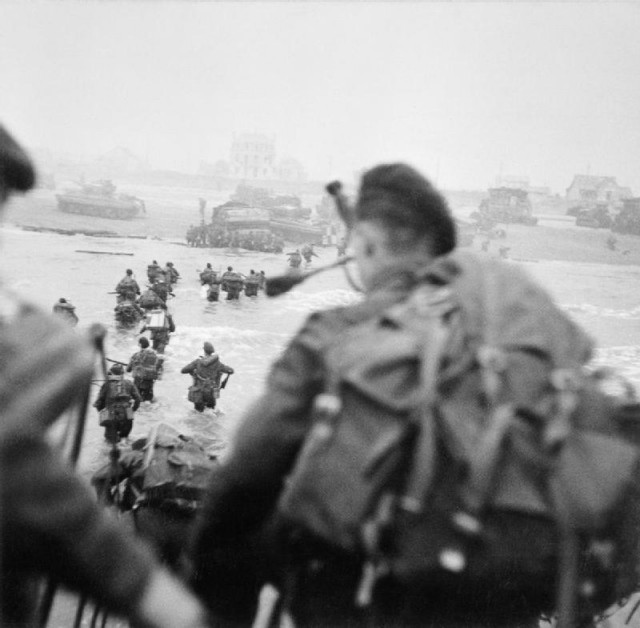
Sword Beach, near the mouth of the River Orne, was stormed by the 3rd Division of the British 1st Corps. Compared with the others, they had a relatively easy landing. Within an hour they had taken control of the beach and begun heading inland.
It was then that the troops from Sword found themselves challenged. The British role in the first days of the invasion was to halt and destroy the German Panzer troops around the city of Caen. To do this, the troops landing at Juno and Sword needed to link up with the 6th Airborne, who had landed around the Orne.
Two miles from Sword Beach, they were stopped in their tracks. The 21st Panzers, equipped with 88mm self-propelled guns and supported by German infantry, started putting up stiff resistance. The British 3rd Division had been trained extensively for fighting on the beaches, but now found itself fighting inland. It took them eight hours to adjust, push through the Germans, and reach the 6th Airborne.
Sources:
Nigel Cawthorne (2004), Turning the Tide: Decisive Battles of the Second World War.
